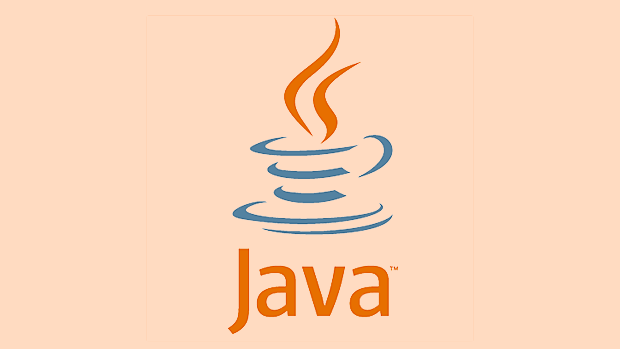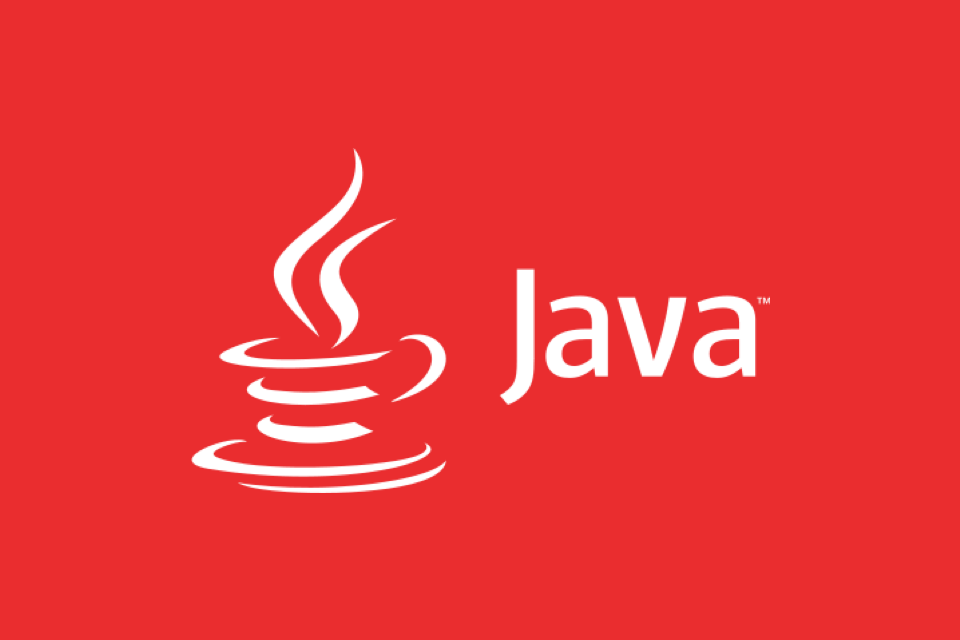Use flatMap and groupingBy to implement classification summary of nested collections; 2. Use Stream.iterate and takeWhile to implement state-based stream processing; 3. Use partitioningBy to perform group statistics; 4. Use Stream.concat to merge multiple streams and deduplicate them through toMap and control conflict resolution; 5. Use custom unchecked function wrapper to safely handle detected exceptions in the stream; 6. Use merge functions in toMap elegantly handle key conflicts; 7. Use parallelStream with caution, only enabled when the data is large and the operations are CPU-intensive, and ensure that the operations are stateless and parallelizable; these advanced modes make the Java Stream API clearer, efficient and scalable in complex data processing by avoiding variable states, improving declarativeness, creatively combining collectors, and handling boundary situations.

When working with collections in Java, the Stream API—introduced in Java 8—has become a powerful tool for processing data in a declarative and functional style. While basic operations like filter , map , and collect are widely used, mastering advanced patterns can significantly improve code clarity, performance, and scalability when dealing with complex data transformations. Below are several advanced Java Stream API patterns commonly used in real-world data processing scenarios.

1. Chaining Complex Transformations with FlatMap and Grouping
One of the most powerful yet underused features is flatMap , especially when combined with grouping and downstream collectors.
Use Case:
You have a list of Order objects, each containing a list of Item s. You want to get a map of categories to the total price of items in that category.

public class Order {
private List<Item> items;
// getter
}
public class Item {
private String category;
private BigDecimal price;
// getters
}Advanced Pattern:
Map<String, BigDecimal> categoryTotals = orders.stream()
.flatMap(order -> order.getItems().stream())
.collect(Collectors.groupingBy(
Item::getCategory,
Collectors.reducing(BigDecimal.ZERO, Item::getPrice, BigDecimal::add)
));-
flatMapflattens nested collections. -
groupingBywith a downstreamreducingcollector efficiently aggregates values. - This avoids nested loops and mutable state.
? Tip: Use
Collectors.summingBigDecimal(Item::getPrice)as a shorter alternative if you're just summing.
2. Stateful Filtering Using Stream.iterate and takeWhile (Java 9)
Streams are typically stateless, but sometimes you need to process elements based on previous results—like reading log entries until a condition is met.

Use Case:
Process log events until an "ERROR" entry is encountered.
List<LogEntry> logs = getLogs();
List<LogEntry> processed = Stream.iterate(0, i -> i 1)
.takeWhile(i -> i < logs.size() && !logs.get(i).getType().equals("ERROR"))
.map(logs::get)
.toList();-
iterategenerates an index stream. -
takeWhile(Java 9) stops when the predicted fails. - Avoids full traversal and breaks early.
?? Caution: This pattern is not parallel-friendly due to state dependence.
3. Partitioning with Custom Logic Using Collectors.partitioningBy
While partitioningBy usually takes a Predicate , you can combine it with other collectors for deep insights.
Use Case:
Split customers into two groups (high/low value) and compute average order value per group.
Map<Boolean, Double> avgByValueSegment = customers.stream()
.collect(Collectors.partitioningBy(
c -> c.getTotalSpent().compareTo(BigDecimal.valueOf(1000)) > 0,
Collectors.avagingDouble(c -> c.getOrderHistory().stream()
.mapToDouble(order -> order.getAmount().doubleValue())
.average()
.orElse(0.0)
)
));- Key:
partitioningByreturns aMap<Boolean, T>. - Downstream collector computes averages only within each segment.
- Useful for A/B analysis or cohort comparisons.
4. Merging Multiple Streams with concat and distinct
Sometimes you need to merge data from different sources and deduplicate.
Use Case:
Combine user data from database and API, removing duplicates by ID.
Stream<User> dbUsers = getDbUsers().stream();
Stream<User> apiUsers = getApiUsers().stream();
List<User> merged = Stream.concat(dbUsers, apiUsers)
.collect(Collectors.toMap(
User::getId,
user -> user,
(existing, replacement) -> existing // prefer first (eg, DB source)
))
.values()
.stream()
.toList();-
Stream.concatcombines two streams. -
toMaphandles deduplication via merge function. - You control conflict resolution (eg, prefer DB over API).
? Alternative: Use
distinct()ifequals/hashCodeare properly defined—but be cautious about performance on large datasets.
5. Handling Exceptions in Streams
Streams don't handle checked exceptions well in lambda expressions. Use a wrapper utility.
Use Case:
Parsing file paths where Files.lines() throws IOException .
public static <T, R> Function<T, R> uncheckedFunction(
ThrowingFunction<T, R, Exception> f) {
return t -> {
try {
return f.apply(t);
} catch (Exception e) {
throw new RuntimeException(e);
}
};
}
@FunctionalInterface
interface ThrowingFunction<T, R, E extends Exception> {
R apply(T t) throws E;
}Usage:
List<String> processedFiles = fileNames.stream()
.map(uncheckedFunction(Files::readString))
.map(this::processContent)
.toList();- Wraps checked exceptions into unchecked ones.
- Keeps stream pipelines clean and readable.
6. Efficient Reduction with Collectors.toMap and merge functions
When building maps from streams, always consider collision cases.
Map<String, User> userMap = users.stream()
.collect(Collectors.toMap(
User::getEmail,
user -> user,
(u1, u2) -> u1.getCreationDate().isBefore(u2.getCreationDate()) ? u1 : u2 // keep older
));- Resolves duplicate keys intelligently.
- Avoids
IllegalStateExceptionfrom duplicates.
7. Parallel Streams with Caution: When (and When Not) to Use
Parallel streams can speed up CPU-intensive tasks, but misuse leads to bugs or slowdowns.
? Good for:
- Large datasets
- Independent, CPU-heavy operations (eg, image processing, math)
? Avoid for:
- I/O-bound tasks
- Stateful operations
- Small collections (< 10k elements)
Example:
BigDecimal total = transactions.parallelStream()
.filter(t -> t.getDate().isAfter(lastMonth))
.map(Transaction::getAmount)
.reduce(BigDecimal.ZERO, BigDecimal::add);? Note: Use
reducewith associated and stateless accumulators only.
Final Thoughts
Advanced Stream patterns shine when you:
- Avoid mutable collectors.
- Prefer declarative over imperial code.
- Combine collectors creatively.
- Handle edge cases (duplicates, exceptions, early termination).
Used wisely, the Stream API makes data processing code more expressive, less error-prone, and easier to parallelize.
Basically, once you move beyond filter-map-collect , the real power of functional-style data transformation in Java opens up.
The above is the detailed content of Advanced Java Stream API Patterns for Data Processing. For more information, please follow other related articles on the PHP Chinese website!

Hot AI Tools

Undress AI Tool
Undress images for free

Undresser.AI Undress
AI-powered app for creating realistic nude photos

AI Clothes Remover
Online AI tool for removing clothes from photos.

Clothoff.io
AI clothes remover

Video Face Swap
Swap faces in any video effortlessly with our completely free AI face swap tool!

Hot Article

Hot Tools

Notepad++7.3.1
Easy-to-use and free code editor

SublimeText3 Chinese version
Chinese version, very easy to use

Zend Studio 13.0.1
Powerful PHP integrated development environment

Dreamweaver CS6
Visual web development tools

SublimeText3 Mac version
God-level code editing software (SublimeText3)

Hot Topics
 What is the `enum` type in Java?
Jul 02, 2025 am 01:31 AM
What is the `enum` type in Java?
Jul 02, 2025 am 01:31 AM
Enums in Java are special classes that represent fixed number of constant values. 1. Use the enum keyword definition; 2. Each enum value is a public static final instance of the enum type; 3. It can include fields, constructors and methods to add behavior to each constant; 4. It can be used in switch statements, supports direct comparison, and provides built-in methods such as name(), ordinal(), values() and valueOf(); 5. Enumeration can improve the type safety, readability and flexibility of the code, and is suitable for limited collection scenarios such as status codes, colors or week.
 What is the interface segregation principle?
Jul 02, 2025 am 01:24 AM
What is the interface segregation principle?
Jul 02, 2025 am 01:24 AM
Interface Isolation Principle (ISP) requires that clients not rely on unused interfaces. The core is to replace large and complete interfaces with multiple small and refined interfaces. Violations of this principle include: an unimplemented exception was thrown when the class implements an interface, a large number of invalid methods are implemented, and irrelevant functions are forcibly classified into the same interface. Application methods include: dividing interfaces according to common methods, using split interfaces according to clients, and using combinations instead of multi-interface implementations if necessary. For example, split the Machine interfaces containing printing, scanning, and fax methods into Printer, Scanner, and FaxMachine. Rules can be relaxed appropriately when using all methods on small projects or all clients.
 Asynchronous Programming Techniques in Modern Java
Jul 07, 2025 am 02:24 AM
Asynchronous Programming Techniques in Modern Java
Jul 07, 2025 am 02:24 AM
Java supports asynchronous programming including the use of CompletableFuture, responsive streams (such as ProjectReactor), and virtual threads in Java19. 1.CompletableFuture improves code readability and maintenance through chain calls, and supports task orchestration and exception handling; 2. ProjectReactor provides Mono and Flux types to implement responsive programming, with backpressure mechanism and rich operators; 3. Virtual threads reduce concurrency costs, are suitable for I/O-intensive tasks, and are lighter and easier to expand than traditional platform threads. Each method has applicable scenarios, and appropriate tools should be selected according to your needs and mixed models should be avoided to maintain simplicity
 Differences Between Callable and Runnable in Java
Jul 04, 2025 am 02:50 AM
Differences Between Callable and Runnable in Java
Jul 04, 2025 am 02:50 AM
There are three main differences between Callable and Runnable in Java. First, the callable method can return the result, suitable for tasks that need to return values, such as Callable; while the run() method of Runnable has no return value, suitable for tasks that do not need to return, such as logging. Second, Callable allows to throw checked exceptions to facilitate error transmission; while Runnable must handle exceptions internally. Third, Runnable can be directly passed to Thread or ExecutorService, while Callable can only be submitted to ExecutorService and returns the Future object to
 Best Practices for Using Enums in Java
Jul 07, 2025 am 02:35 AM
Best Practices for Using Enums in Java
Jul 07, 2025 am 02:35 AM
In Java, enums are suitable for representing fixed constant sets. Best practices include: 1. Use enum to represent fixed state or options to improve type safety and readability; 2. Add properties and methods to enums to enhance flexibility, such as defining fields, constructors, helper methods, etc.; 3. Use EnumMap and EnumSet to improve performance and type safety because they are more efficient based on arrays; 4. Avoid abuse of enums, such as dynamic values, frequent changes or complex logic scenarios, which should be replaced by other methods. Correct use of enum can improve code quality and reduce errors, but you need to pay attention to its applicable boundaries.
 Understanding Java NIO and Its Advantages
Jul 08, 2025 am 02:55 AM
Understanding Java NIO and Its Advantages
Jul 08, 2025 am 02:55 AM
JavaNIO is a new IOAPI introduced by Java 1.4. 1) is aimed at buffers and channels, 2) contains Buffer, Channel and Selector core components, 3) supports non-blocking mode, and 4) handles concurrent connections more efficiently than traditional IO. Its advantages are reflected in: 1) Non-blocking IO reduces thread overhead, 2) Buffer improves data transmission efficiency, 3) Selector realizes multiplexing, and 4) Memory mapping speeds up file reading and writing. Note when using: 1) The flip/clear operation of the Buffer is easy to be confused, 2) Incomplete data needs to be processed manually without blocking, 3) Selector registration must be canceled in time, 4) NIO is not suitable for all scenarios.
 Exploring Different Synchronization Mechanisms in Java
Jul 04, 2025 am 02:53 AM
Exploring Different Synchronization Mechanisms in Java
Jul 04, 2025 am 02:53 AM
Javaprovidesmultiplesynchronizationtoolsforthreadsafety.1.synchronizedblocksensuremutualexclusionbylockingmethodsorspecificcodesections.2.ReentrantLockoffersadvancedcontrol,includingtryLockandfairnesspolicies.3.Conditionvariablesallowthreadstowaitfor
 How Java ClassLoaders Work Internally
Jul 06, 2025 am 02:53 AM
How Java ClassLoaders Work Internally
Jul 06, 2025 am 02:53 AM
Java's class loading mechanism is implemented through ClassLoader, and its core workflow is divided into three stages: loading, linking and initialization. During the loading phase, ClassLoader dynamically reads the bytecode of the class and creates Class objects; links include verifying the correctness of the class, allocating memory to static variables, and parsing symbol references; initialization performs static code blocks and static variable assignments. Class loading adopts the parent delegation model, and prioritizes the parent class loader to find classes, and try Bootstrap, Extension, and ApplicationClassLoader in turn to ensure that the core class library is safe and avoids duplicate loading. Developers can customize ClassLoader, such as URLClassL






